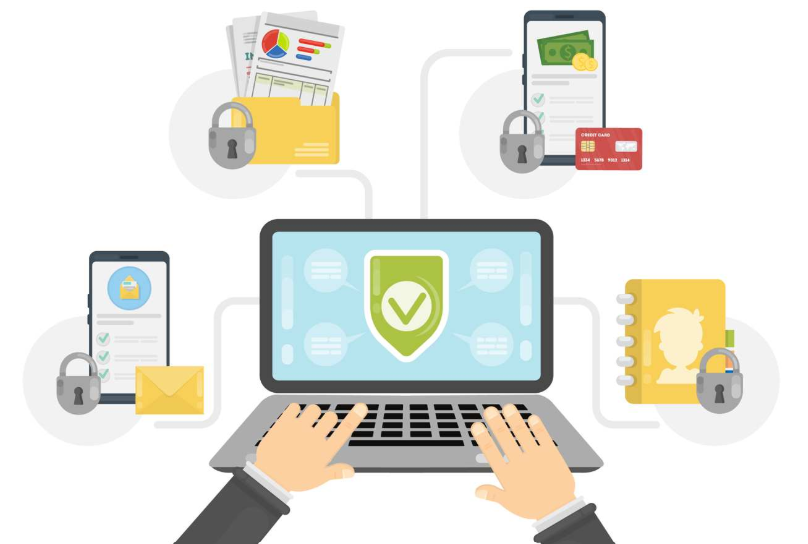Introduction to Collaborative Tools
Nowadays, as digital platforms have taken over all sectors of the economy, workplace collaboration tools are easily among the most important tools for any organization. Unfortunately, by 2025, these tools will be greatly enhanced from their earlier versions and provide enhanced communication, project tracking, and real-time document sharing.
Based on these observations, I will repeat that the crucial role of practical collaboration tools grows with the distribution of teams. It would help if the correct tools allowed team members to communicate the status of the team’s tasks and share important information with little or no lag.
There are diverse collaboration tools, and every one is intended to meet a concrete collaboration segment. Some examples include: In communication platforms, one has the potential for individuals to be able to convey instantaneous messages, including voice and video calls, thus enabling individuals in a team, for instance, to have a real-time conversation irrespective of the geographical location.
Most of the actual working process involves using project management applications that help everyone keep track of tasks, critical deadlines, available resources and more to keep everyone on the same page with the project.
Messaging and collaboration services have more personal and secure cloud systems for sharing and storing documents than emails. This makes work shared between team members more efficient when collaborating on files without version control problems.
They also share interoperability with other working tools and applications that logically gather all required tools into a single interface, avoiding frequent cross-platform navigation. This makes work easier for various teams, who will spend less time juggling several interfaces. These high-tech technologies can create an organizational culture that will achieve high results through teamwork and idea implementation.

Tool #1: Advanced Communication Platforms
In 2025, advanced communication platforms will be pivotal for keeping teams connected regardless of their location. These extended options include real-time chat, web conferences in the form of voice and video meetings, and the sharing of screen images.
Most of the time, there are general channels for everyone and individual channels for discussion, which makes moderating the conversation easier. Such applications enable face-to-face interactions even though workers communicate and collaborate virtually, an essential aspect of social interaction in the newly emerging working environment. Similarly, the features to share screens extend the possibilities for joint effort since team members can demonstrate their work and share their first impressions.
An interesting aspect is their compatibility with other work apps, such as calendars and project management software. This integration assures smooth communication and parallels the project schedule and timeframe. Multiple alerts and messages from the applications can be integrated into the messenger, thus minimizing the need to switch between available tools and constantly disrupting people’s workflow.
Furthermore, sophisticated communication tools can be available with their mobile counterparts, so all team members can remain connected and logged in even if they are away from their PCs. Another is security or privacy; several services enable end-to-end encryption and increase the level of security that bound data exchanged between users.
The use of graphical interfaces and adjustable parameters of the workflows make the application easily tailored to meet the precise needs of the teams, which in turn simplifies the ways to improve the productivity of the teams’ communication environment.
Tool #2: Project Management Applications
Project management applications are essential tools for facilitating collaboration. They provide the framework for managing project tasks and timelines and allocating resources. These applications offer onscreen pages summarizing the current project status and the teams’ specific goals.
These include checklists, Gantt charts, and a Kanban board, which help teams view their activities and determine how best to sequence them. It also makes all the visible, guaranteeing that a mission is not overlooked, while in the process, it tracks possible congestions ahead for the team.
Alerts and other notifications help all individuals understand that deadlines must be met and specific tasks must be completed on time. Combining other collaborative applications is valuable because it is compatible with project management software and aligns with communications and storage systems.
Most project management tools also offer time-tracking functions, depending on the extent of the functions chosen for project usage. The data may help project managers decide how best to deploy resources throughout the period and how to control and use financial resources. The reporting and analysis tools allow managers to understand how a team works, what needs to be fixed, and where to focus.
User privileges and access levels can be set, whereby a particular team has privileges to some aspects while others do not. Such measures are important to ensure a high standard of work without prejudicing team spirit.
Tool #3: File Sharing and Storage Options
Secure cloud storage is vital to modern collaboration, allowing teams to access and share files effortlessly. As we approach 2025, file-sharing and storage providers have continued to evolve and institutionalized security mechanisms that ensure the safety of clients’ sensitive information.
These include capabilities quickly dubbed as familiar ones, such as drag and drop control over files, as well as version control and easy permission and access settings so that the files are shared easily but securely. By storing files in the cloud, teams can collaborate in real-time, making updates and comments directly on documents without the hassle of managing multiple file versions. This enhances collaboration and ensures all team members access the latest information.
Integration with other collaborative tools further streamlines workflows, enabling teams to manage their documents within a unified platform. For instance, many file storage solutions sync effortlessly with project management applications, making attaching relevant files to specific tasks and projects easy. This level of integration allowed for less alternation between the two different software, which helped reduce time and error.
The universality of search enables users to search documents within the team effectively and track the history of who accessed or changed a document. Some of the storage solutions also provide offline functionality.
Thus, the documents stored inside are still accessible without an internet connection. An important aspect of the solution is a permissions feature through which users can decide who has access to the files, who can read, modify or download them, and who should be informed about such possibilities. This is because it ensures private information is protected while being used by those who require it.
Tool #4: Collaborative Design Tools
The best collaborative design tools in 2025 will enhance the ability of creative groups to work together and enable more feature support for teams. These platforms enable real-time editing, meaning several people can edit the document simultaneously.
This is very useful in design projects where the project changes frequently and receives frequent feedback. Many teleworkers note that interactive whiteboards are helpful because they allow team members to jot down ideas and paint certain concepts collectively, offering a more creative approach to idea discussions.
Templates with such tools afford design solutions that are standard initial forms that can be adapted to a team’s needs. Integrated asset libraries with graphics, icons, and other design materials enable faster and more effective work. Additionally, comment and annotation features enable team members to provide instant feedback directly on the design, making it easier to track suggestions and improvements.
Linking with other working applications used in a project, such as project management and communication systems, makes the design flow seamless. These integrations enable efficient sharing of design files and updates within the larger project development environment, informing all team members. Security issues, including user access rights and the check-in/check-out feature, protect the designs so that only certain persons can make changes.
Unfortunately, the user interactions of these design tools are self-explanatory regardless of whether a person is new to design or experience, thus adding to their popularity among creative teams.
Tool #5: Team Feedback and Survey Tools
Gathering feedback is essential for fostering continuous improvement within teams. In 2025, team feedback and survey tools can be professionally organized, benefiting members and teams.
These tools allow for flexible surveying, using polls, and working with anonymous feedback, enabling organizations to get honest feedback quickly. Interactive dashboards compile and present feedback data in an accessible format, allowing managers to promptly identify trends and address concerns.
Sophisticated implementational analysis in these tools can show areas of strength and areas that need improvement to avoid wasting resources on planning. This means that communication and feedback can be easily integrated into project management, regardless of the tool used.
Automated reminders and follow-ups encourage timely participation, while mobile accessibility allows team members to provide feedback from anywhere. Customizable permissions ensure that sensitive feedback is only accessible to authorized personnel, maintaining confidentiality.
By leveraging these features, organizations can create a more responsive and adaptive work environment.
Conclusion: Selecting the Right Tools
Choosing the right cooperation tools is essential for effective team functioning and accomplishing organizational objectives. In this case, pay attention to what your team needs most, depending on how you want the app to work and how easy it should be for all of you to use. Also, ensure that the tools have strong integration options to provide a smooth connection to other programs used in your team.
Cost is another critical factor. Weigh the value of the features provided against the budget constraints to make an informed decision. Choosing tools that offer trial periods or demos is also beneficial. This allows your team to test the features and gauge how well they meet your needs before committing.
Staying updated on technology’s latest advancements is vital. Regularly review and reassess your toolset to ensure it remains aligned with your team’s changing demands and industry standards. Ask your team members about the tools they are using, as this will help you make future choices about which tools to purchase.
Last but not least, the offer should have easy–to–use interfaces and accurate customer support. A well-designed tool that is user-friendly and has good customer service can be of great help and enjoyment for your working team.
Considering such factors, collaboration tools that meet current requirements and address future issues that may arise in team interaction can be chosen. As a result, sustained improvement and enhancement of collaboration tools will be pursued.




One reply on “Best Collaboration Tools and Software Picks for 2025”
Another collaborative tool you might want to use is https://kanbantool.com/. It’s easy to use and effective. And you can test it for free during the trial period 🙂